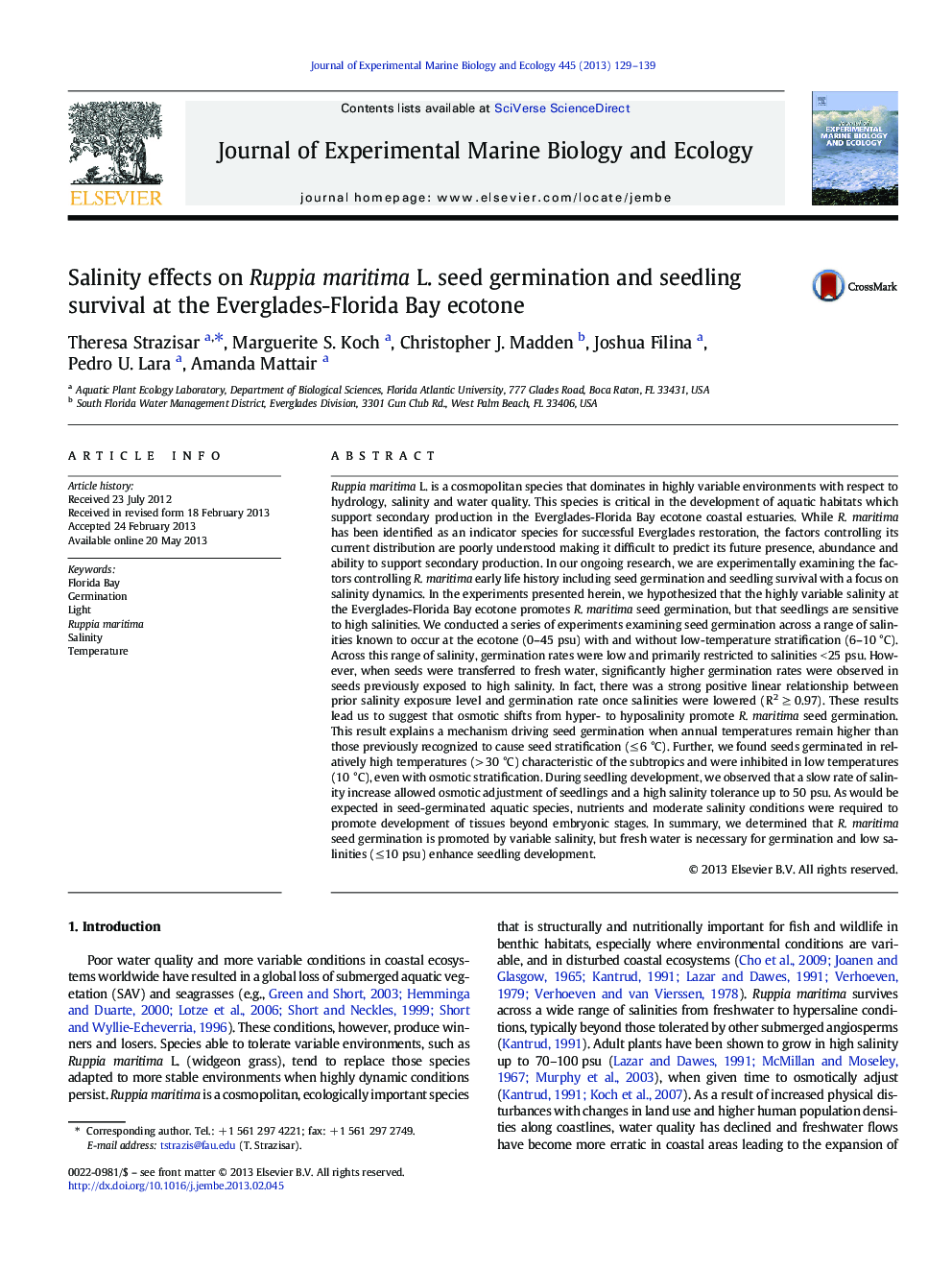| کد مقاله | کد نشریه | سال انتشار | مقاله انگلیسی | نسخه تمام متن |
|---|---|---|---|---|
| 4395637 | 1618430 | 2013 | 11 صفحه PDF | دانلود رایگان |

• Few Ruppia maritima seeds germinated across a salinity range, primarily at < 25 psu.
• The shift from hyper- to hyposalinity significantly increased germination rates.
• R. maritima seeds can germinate in relatively high temperatures (> 30 °C).
• Seedlings adjusted to a slow salinity increase and had high tolerance ≤ 50 psu.
Ruppia maritima L. is a cosmopolitan species that dominates in highly variable environments with respect to hydrology, salinity and water quality. This species is critical in the development of aquatic habitats which support secondary production in the Everglades-Florida Bay ecotone coastal estuaries. While R. maritima has been identified as an indicator species for successful Everglades restoration, the factors controlling its current distribution are poorly understood making it difficult to predict its future presence, abundance and ability to support secondary production. In our ongoing research, we are experimentally examining the factors controlling R. maritima early life history including seed germination and seedling survival with a focus on salinity dynamics. In the experiments presented herein, we hypothesized that the highly variable salinity at the Everglades-Florida Bay ecotone promotes R. maritima seed germination, but that seedlings are sensitive to high salinities. We conducted a series of experiments examining seed germination across a range of salinities known to occur at the ecotone (0–45 psu) with and without low-temperature stratification (6–10 °C). Across this range of salinity, germination rates were low and primarily restricted to salinities < 25 psu. However, when seeds were transferred to fresh water, significantly higher germination rates were observed in seeds previously exposed to high salinity. In fact, there was a strong positive linear relationship between prior salinity exposure level and germination rate once salinities were lowered (R2 ≥ 0.97). These results lead us to suggest that osmotic shifts from hyper- to hyposalinity promote R. maritima seed germination. This result explains a mechanism driving seed germination when annual temperatures remain higher than those previously recognized to cause seed stratification (≤ 6 °C). Further, we found seeds germinated in relatively high temperatures (> 30 °C) characteristic of the subtropics and were inhibited in low temperatures (10 °C), even with osmotic stratification. During seedling development, we observed that a slow rate of salinity increase allowed osmotic adjustment of seedlings and a high salinity tolerance up to 50 psu. As would be expected in seed-germinated aquatic species, nutrients and moderate salinity conditions were required to promote development of tissues beyond embryonic stages. In summary, we determined that R. maritima seed germination is promoted by variable salinity, but fresh water is necessary for germination and low salinities (≤ 10 psu) enhance seedling development.
Journal: Journal of Experimental Marine Biology and Ecology - Volume 445, July 2013, Pages 129–139